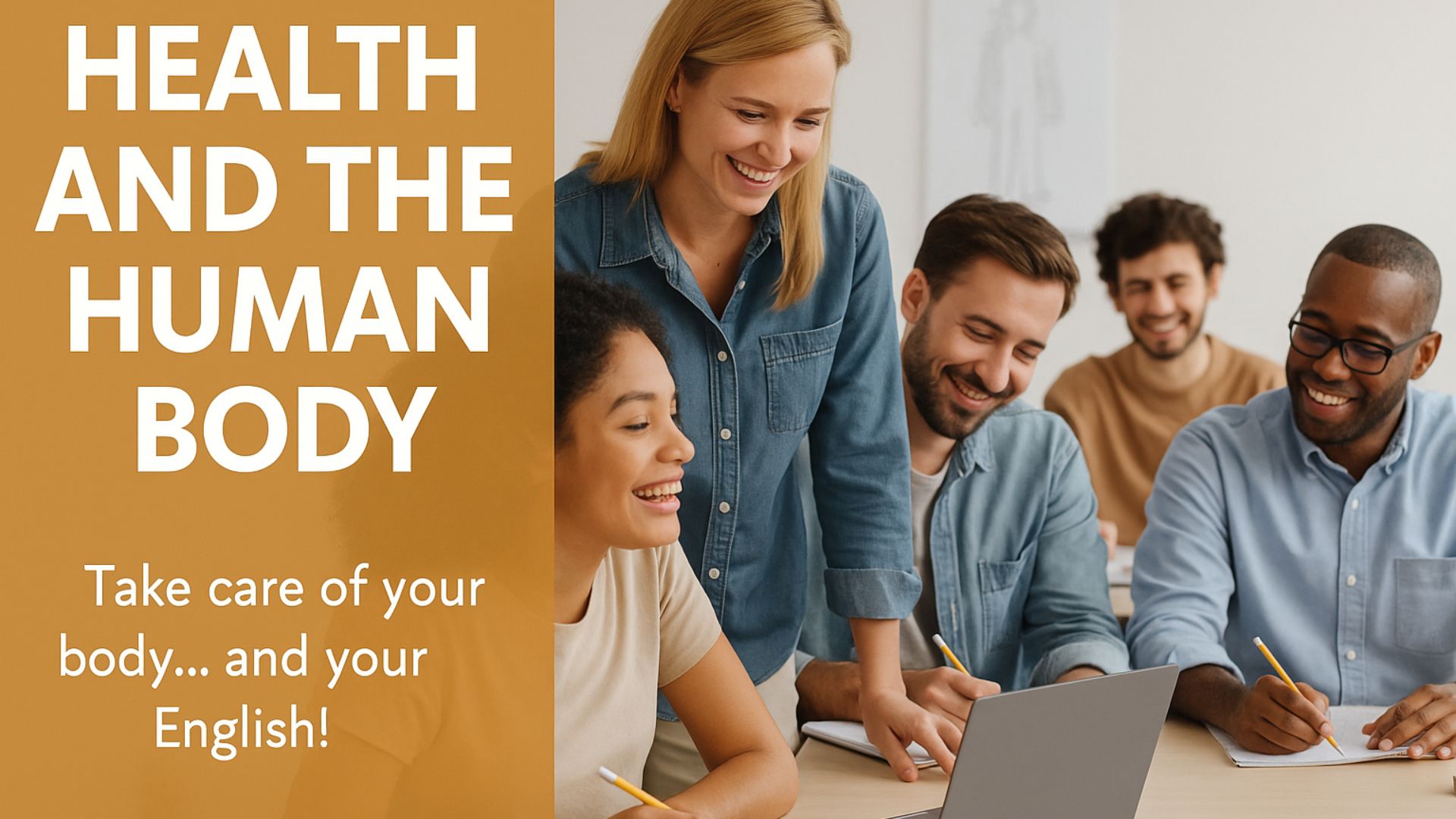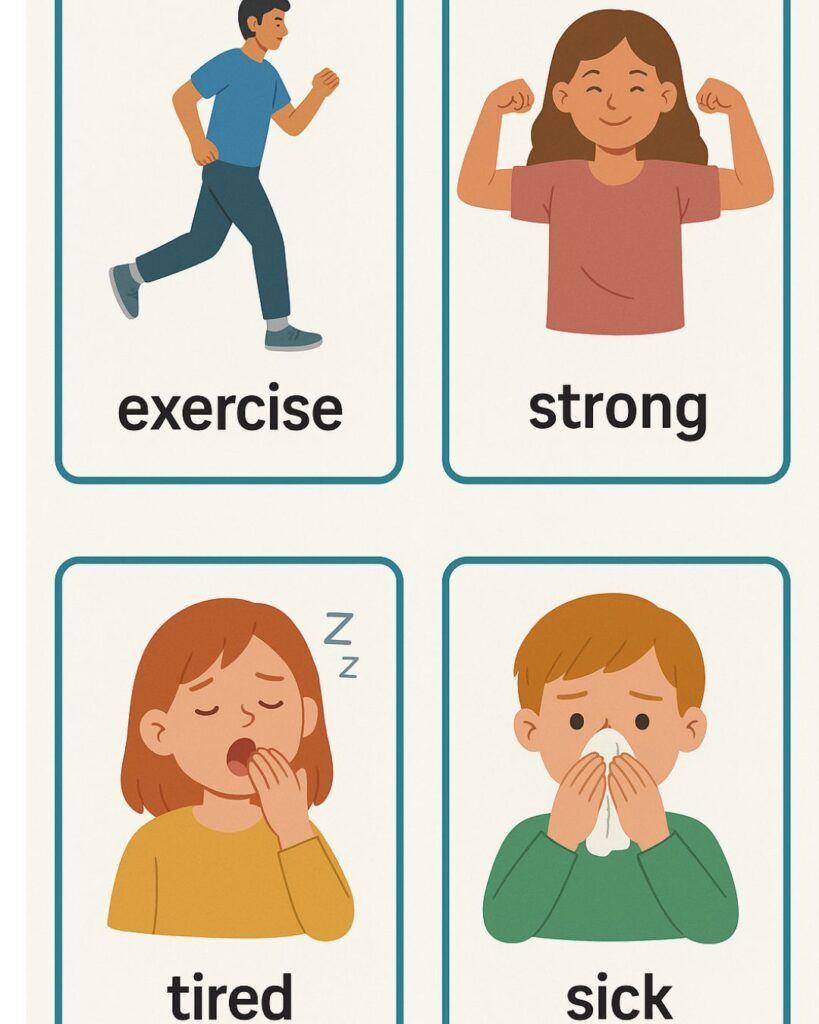Teach health vocabulary, grammar, and real-life English with this no-prep ESL lesson using music, conversation, and quizzes.

Guess what? When you click and buy through our links, you’re doing more than improving your game. You’re supporting us in a way that doesn’t cost you extra but helps us keep bringing you the best drills and tips. It’s a slam dunk for both of us!
Table of Contents
- What’s the best way to teach English vocabulary about health and the body?
- Vocabulary and visual learning
- Modal verbs for health advice
- Learning English through music
- Speaking, writing, and quiz activities
- Final thoughts and download
What’s the best way to teach English vocabulary about health and the body?
The best way to teach English related to health is by combining vocabulary, grammar, conversation, and music in one clear, engaging lesson. Students learn faster and retain more when the material is both useful and fun.
Vocabulary and Visual Learning
This lesson begins with a picture dictionary of essential body parts. Students learn words like head, eye, arm, hand, and foot, using labeled visuals and review activities.


Then they apply what they’ve learned with a short writing prompt like:
“I feel tired when I don’t drink water.”
“My legs hurt after running.”
Modal Verbs for Health Advice
Next comes a grammar mini-lesson on modal verbs like should, must, and can.
Modal verbs are the backbone of English communication, crucial for expressing different shades of meaning. These little words, like ‘can,’ ‘might,’ and ‘must,’ help convey possibilities, abilities, requests, and more. Getting a grip on them can genuinely boost your English skills.
So, what exactly are modal verbs? Think of them as helping verbs that assist the main verb in your sentence to add a layer of meaning. They’re like the secret ingredients that change your bland sentences into expressions packed with intention.
When it comes to their function, modal verbs express necessity, permission, ability, and possibility. For instance, ‘can’ talks about capability — ‘I can swim.’ Meanwhile, ‘should’ suggests advice — ‘You should bring an umbrella.’ They even help with forming polite requests, like ‘Could you pass the salt?’
Here’s a quick rundown of some commonly used modal verbs:
– **Can**: Used for ability or permission, such as “I can cook” or “Can I leave early?”
– **Could**: The past tense of ‘can,’ but also used for polite requests, like “Could I ask you a question?”
– **Will**: Predicts the future and signals intention, so you’ll say, “I will finish my work by Friday.”
– **Must**: Expresses obligation or necessity — “You must wear a helmet.”
Students fill in sentences such as:
- You _____ drink more water.
- You _____ take medicine when you’re sick.
- You _____ sleep at least 8 hours.
This shows learners how to give and receive advice in English — a vital communication skill in real life.
Remember, these verbs aren’t just rules to memorize — they’re tools to express yourself plainly and respectfully. Every sentence with a modal verb is a stepping stone to mastering English conversations.
Learning English Through Music
This lesson features the song “Brown Eyed Girl” by Van Morrison, which offers excellent examples of past tense verbs, adjectives, and everyday language.
Students:
- Read the full lyrics
- Identify verbs, adjectives, and slang
- Answer discussion questions about meaning
- Practice listening with fill-in-the-blank lyrics
Speaking, Writing, and Quiz Activities
The second half of the lesson includes:
- Health interview questions for speaking practice
- A vocabulary matching task
- A 10-question quiz with multiple choice, fill-in-the-blank, and song-related questions
Download the free sample lesson here:
Final Thoughts and Download
If you’re looking for a complete 90-minute ESL lesson that combines grammar, vocabulary, conversation, and music, this one is ready to go.
It’s ideal for both classroom and online use, and all worksheets are editable.
Download the full lesson here:
👉 Health and the Human Body – ESL Lesson for Beginners (TPT)
Or explore more Beginner ESL Lessons here at EnglishTeacherKBob.com
What do you think? Was this lesson helpful? Leave your thoughts in the comments section below. I’d love to hear from you.
I always reply.


This lesson plan is a fantastic resource for ESL beginners!
Integrating visual aids, grammar exercises, and music creates an engaging and comprehensive learning experience. I particularly appreciate using “Brown Eyed Girl” to teach past tense verbs and everyday language—it’s a creative way to make grammar lessons more relatable. The inclusion of modal verbs for health advice is also a practical touch, equipping learners with essential language skills for real-life situations.
Thank you for sharing such a well-structured and versatile lesson plan!
Hi Alyssa, thanks for your comments.
KBob